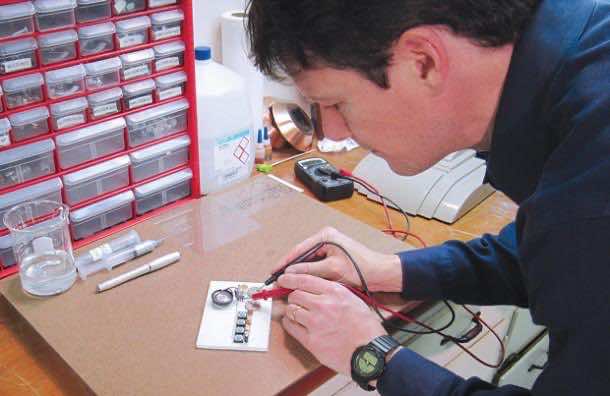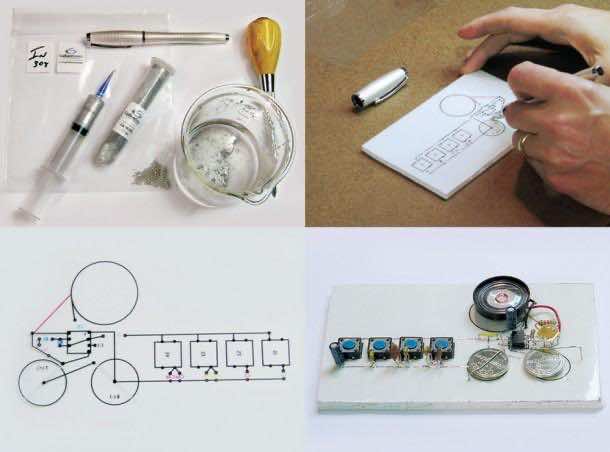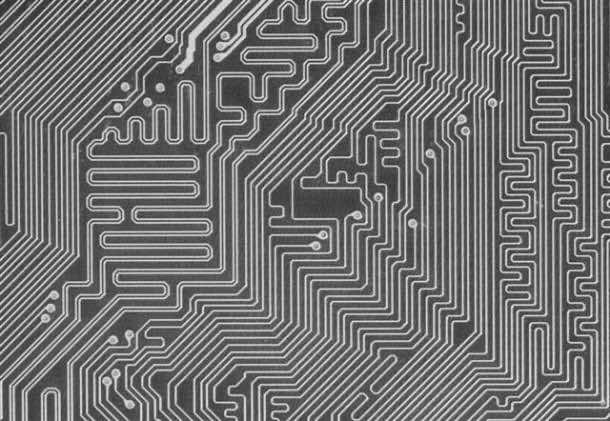For those of you who have trouble soldering, you may find it frustrating and at times, almost impossible to make the circuit board you had in mind. This limitation to fulfilling your imagination is not only aggravating but can even be discouraging.
A few months ago, researchers from Georgia Tech, the University of Tokyo and Microsoft Research came up with a method to print circuit boards using inkjet printers. This solution, called instant inkjet circuits, took only 60 seconds to print a circuit board with an equipment cost of $300 and used ink that included silver nano-particles. There is, however, a cheaper way to make your own conductive ink and produce circuit boards without any risk to your printer.
This method is pretty simple and allows you to use the conductive ink through a simple pen so you can draw your own circuit boards. The research paper which quotes this new method was produced by a team of researchers at the Technical Institute of Physics and Chemistry at the Chinese Academy of Science. The procedure is pretty simple as stated below:
1. Use 99.9% pure gallium and indium. The metals can be purchased at GalliumSource.com for around $130.
2. Make a mixture of 75.5 parts gallium and 24.5 parts indium and mix with deionized water.
3. Heat mixture to 50 °C and stir until a homogeneous silver liquid is produced.
The liquid ink produced by this procedure is two orders of magnitude more conductive than the nanoparticles ink and has a resistivity which is just 17 times that of copper. The cost of the ink is cheap at about $1 per milliliter.
Before inserting the conductive ink into a pen, you must make sure that the pen is completely dry and that there is no ink in it. Also the conductive ink should not have any trace of solid particles which could clog up the pen. Different pens have been tried to pump the ink, but the one that works best so far is a Uni-Ball Jetstream bold-point pen. The ink from the pen should be removed as thoroughly as possible and the ink cartridge washed with alcohol until no ink remains. The pen should be dried before the conductive ink is poured in. Once this is done, remember to always use the pen on plastic transparencies because the surface tension of the ink is so high that it will forms beads if used on regular paper.
And there you have it. Your own circuit printing pen which will allow you to make any circuit board you can imagine. A tip to produce neat circuits is to print the layout on regular paper and place the plastic transparency on top so you can trace the layout with your conductive ink pen.






Hello,
I am attempting to make this pen and I got the exact pen you recommended as well as several other sizes of ballpoint pens. They have not been able to write with this ink. How did you get your pen to work?
Thank you
mast